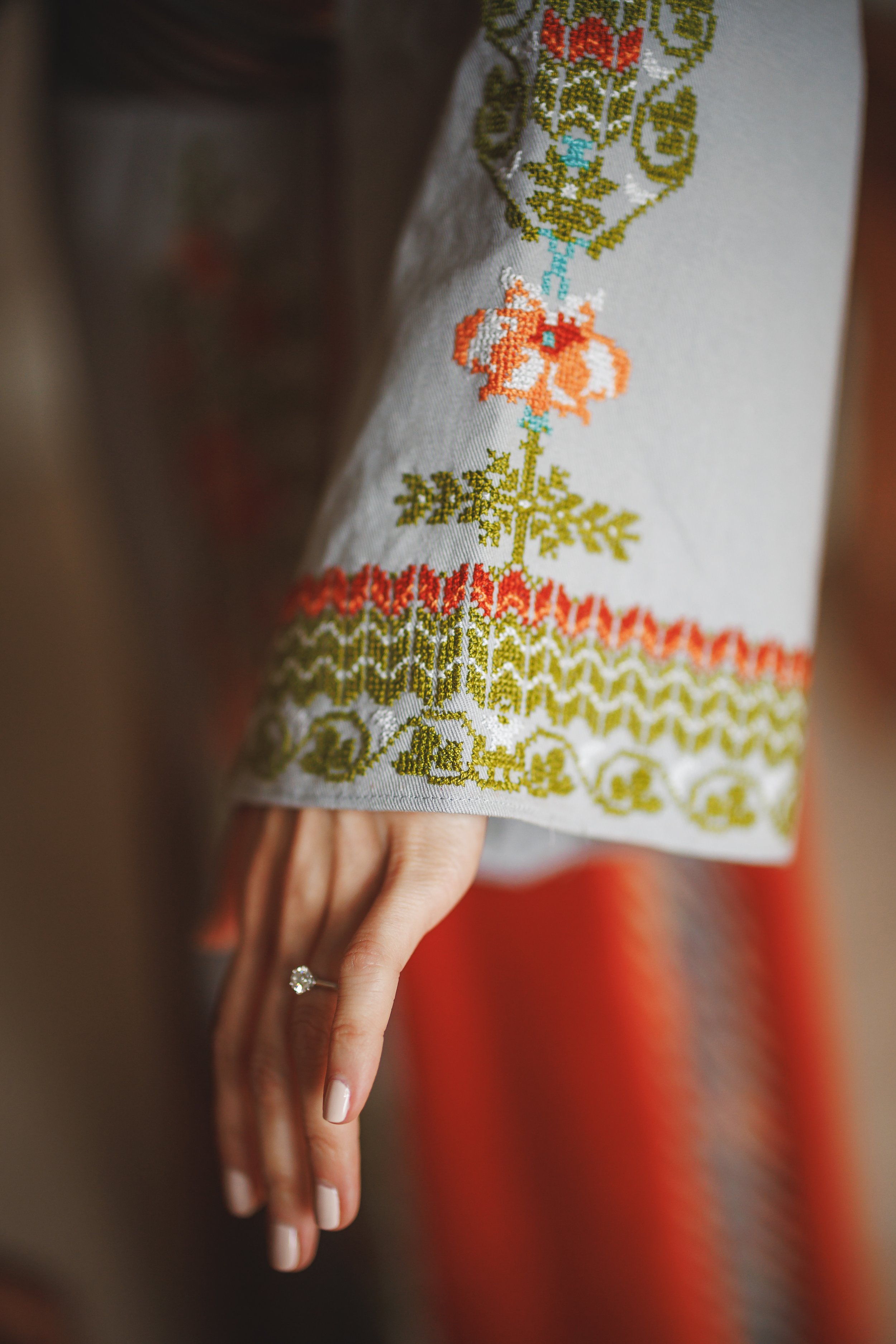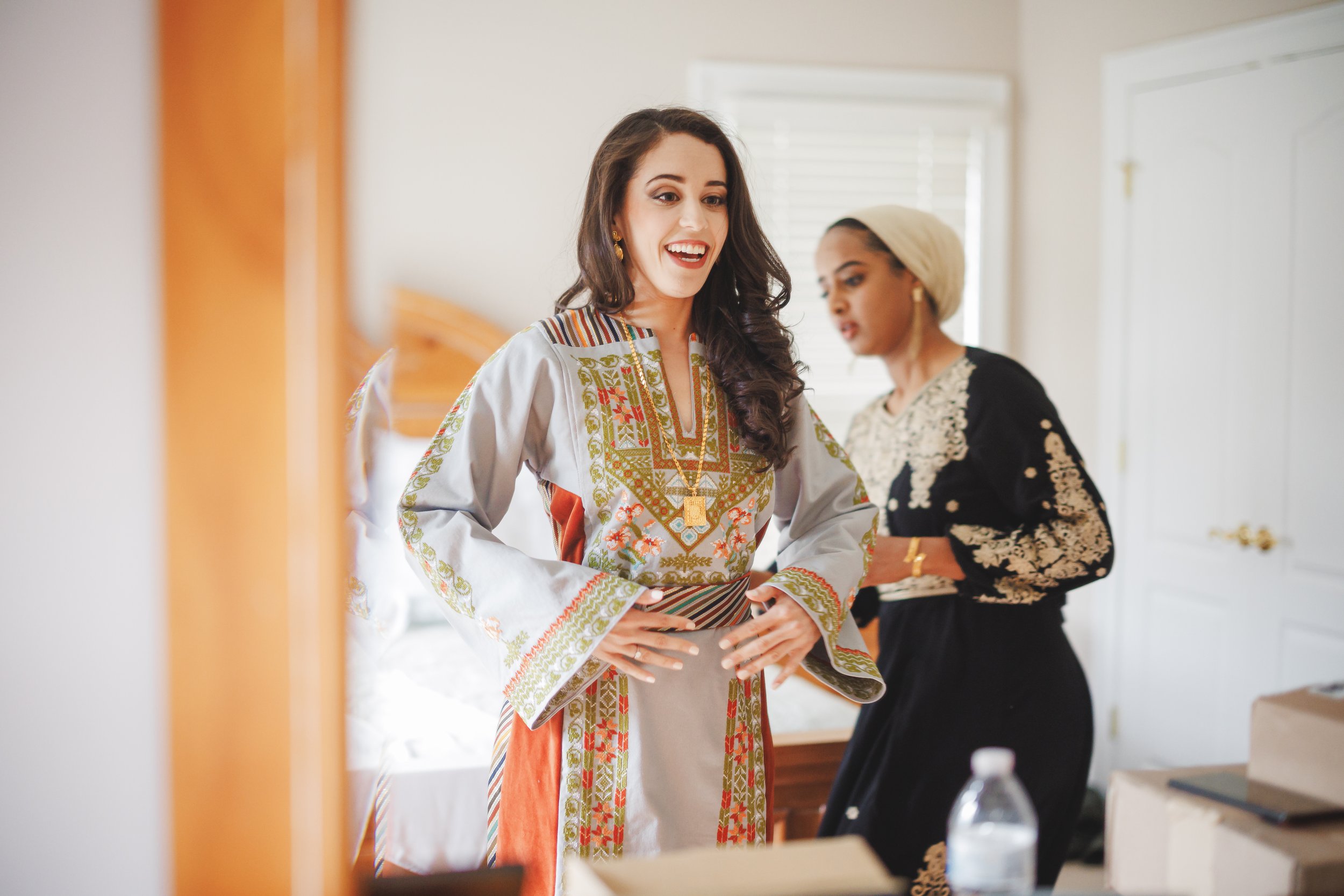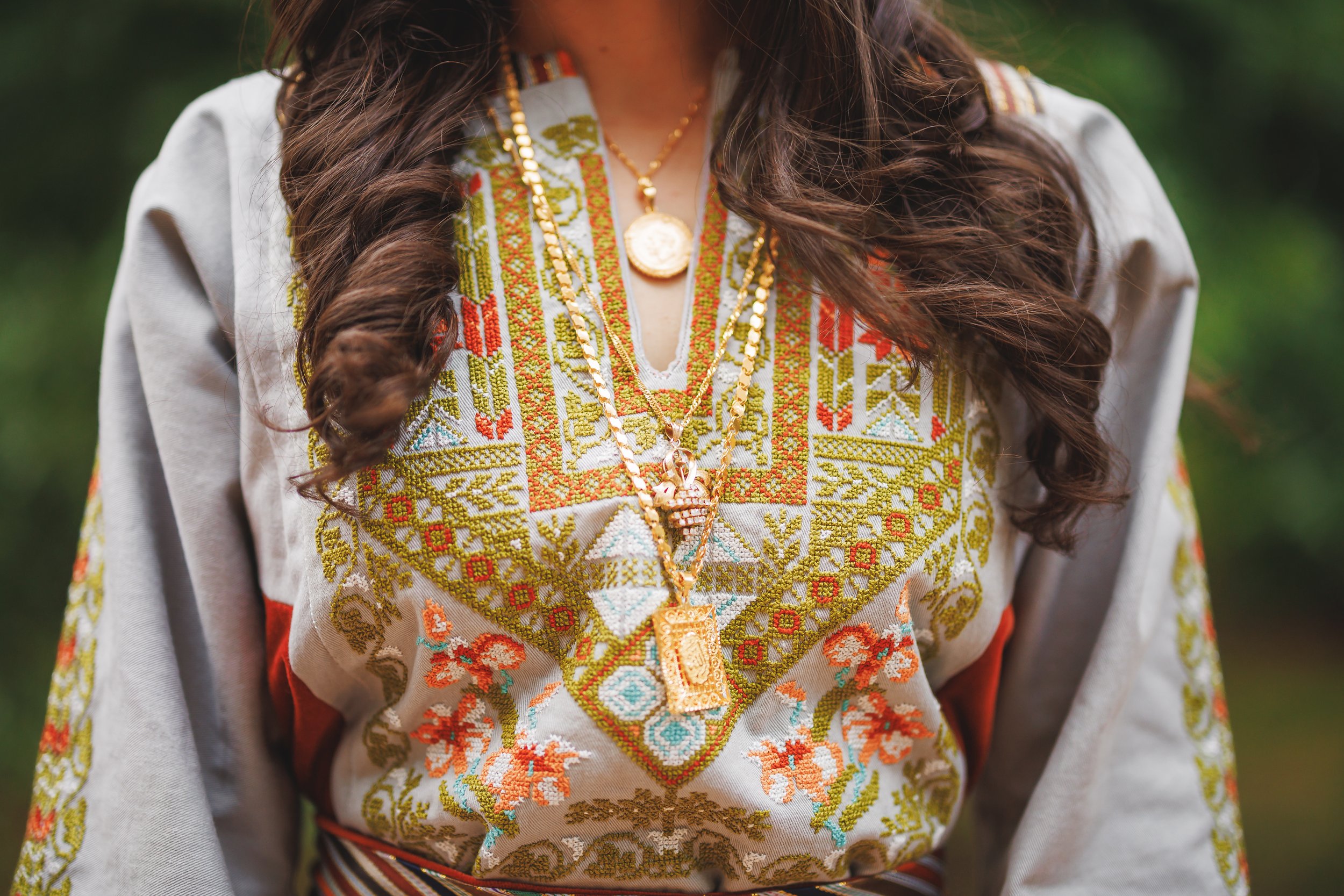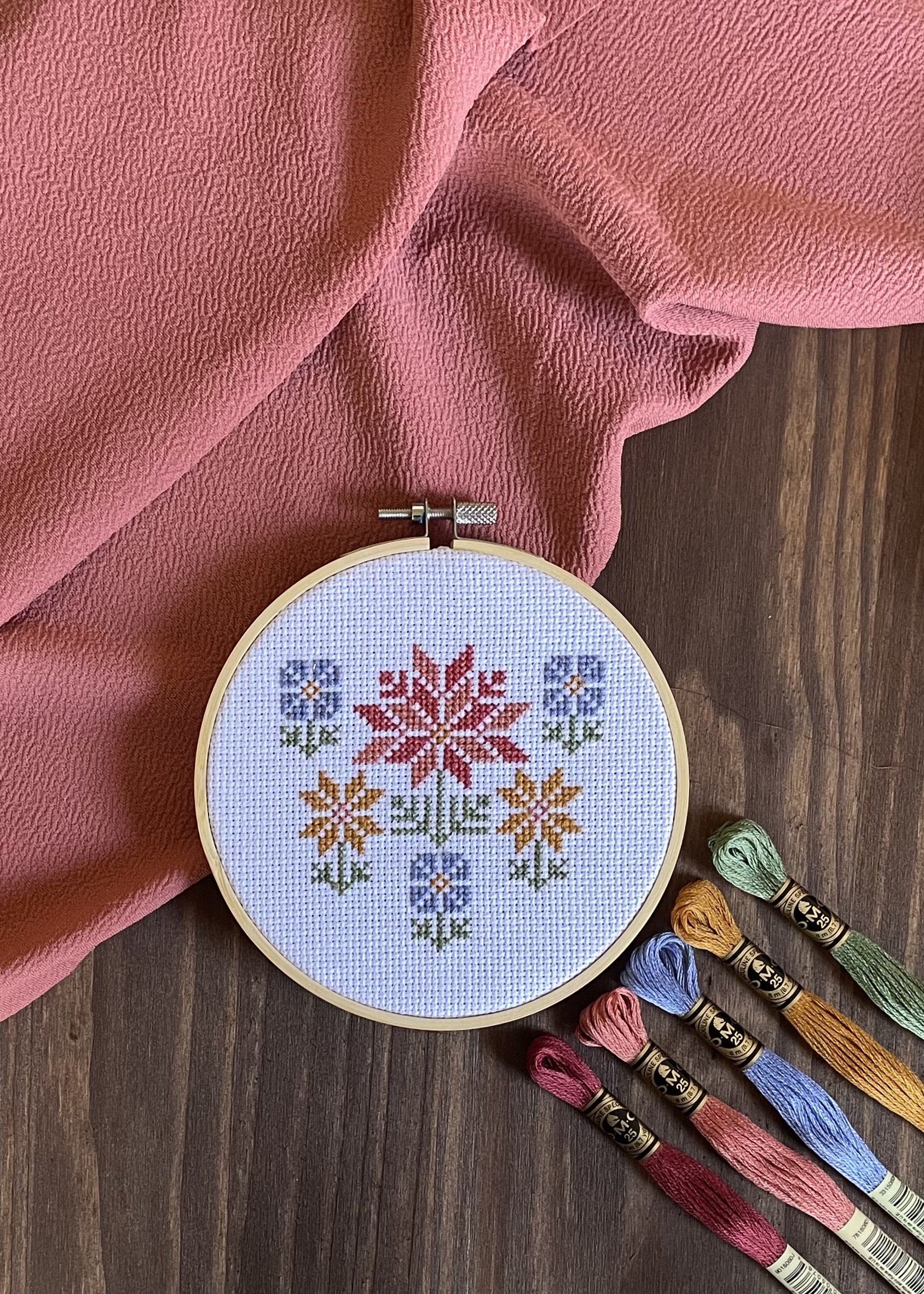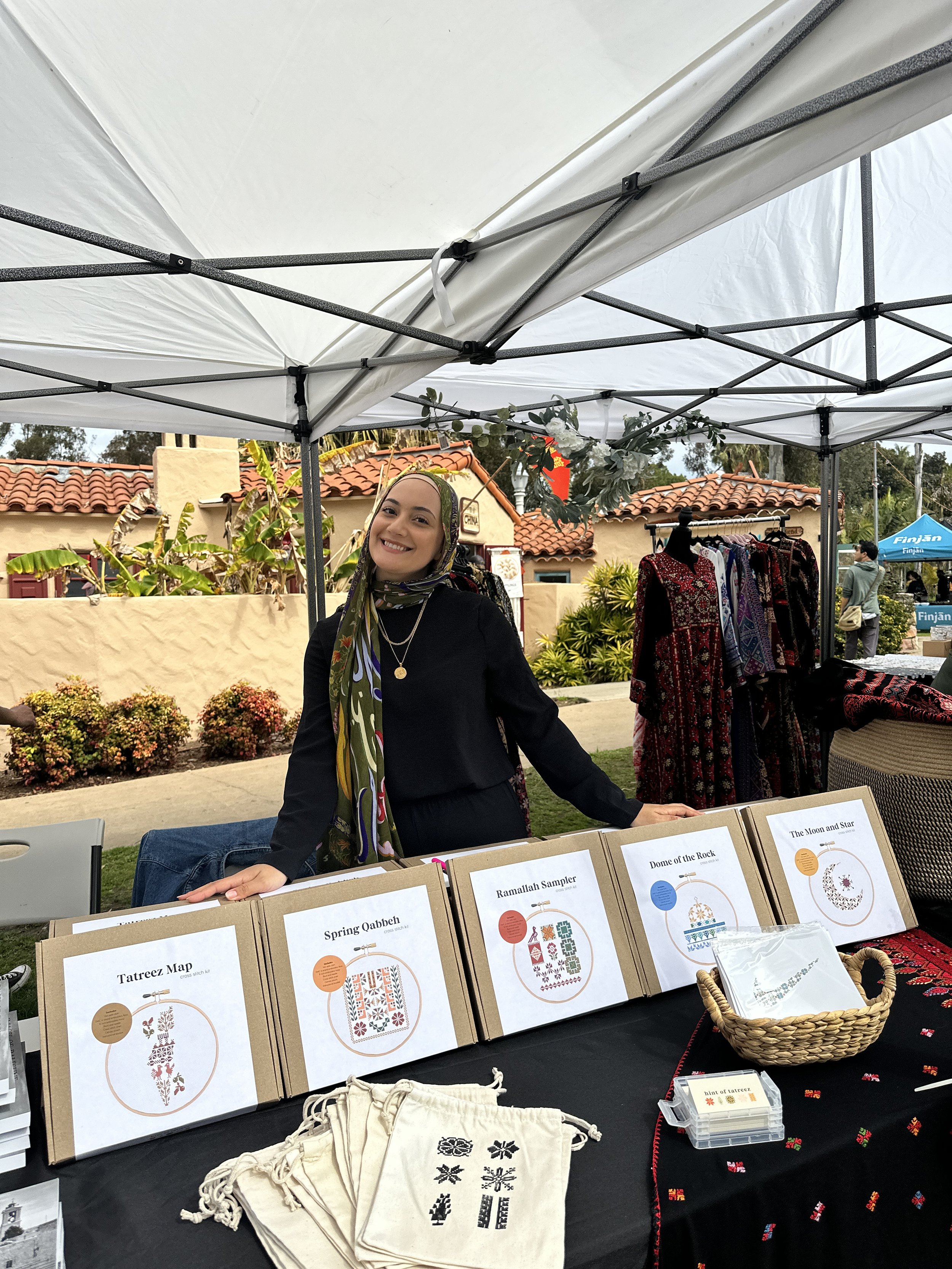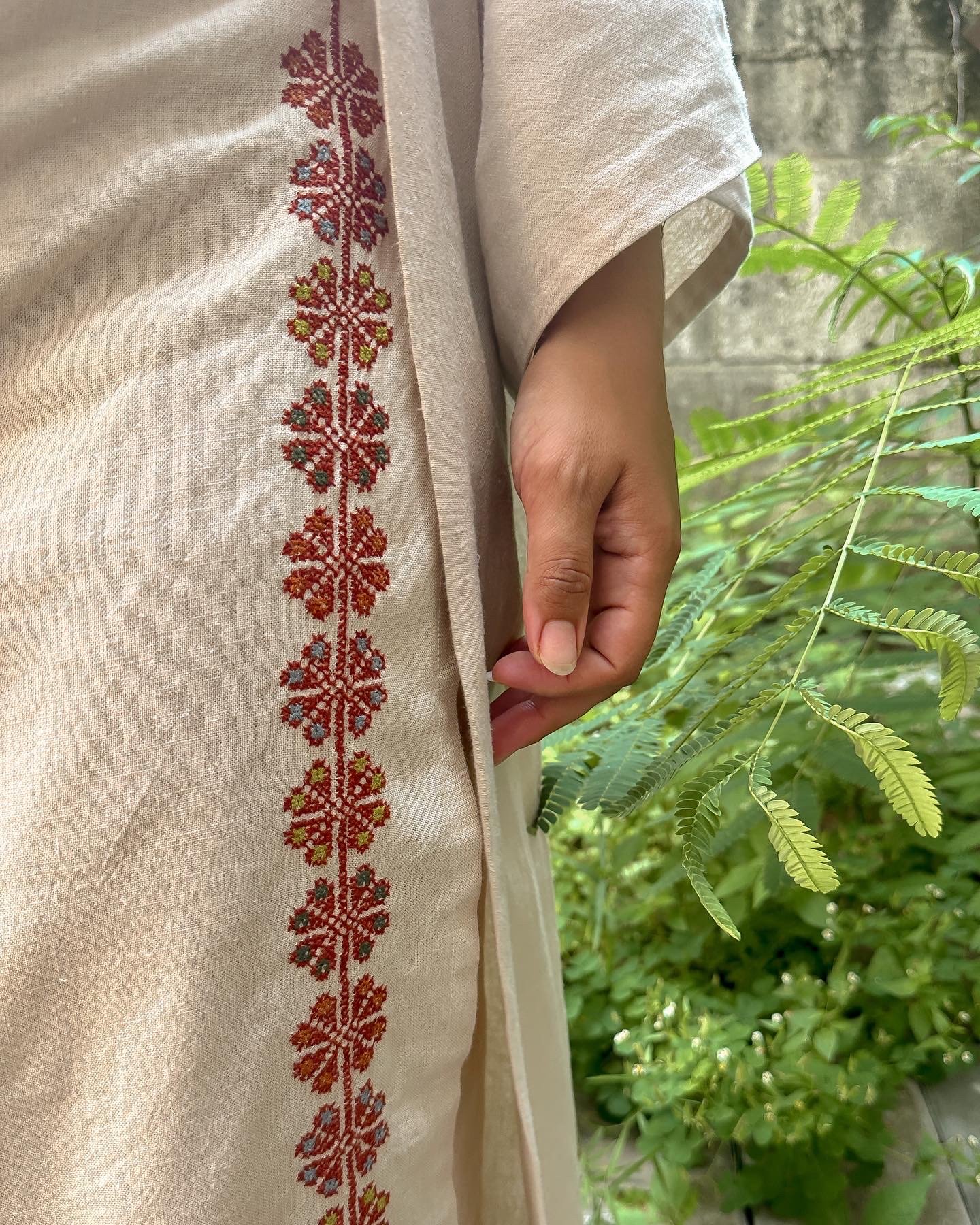Celebrating the cultural tradition, past and present, of Palestinian Tatreez while making the link between culture & sustainability
Episode 316 features guests Lina Barkawi, a tatreez practitioner, preservationist, and educator based in Brooklyn, alongside Eman Toom, a Palestinian tatreez artist, teacher, sewer and crafter.
Through her content and digital courses Lina aims to help Palestinians reclaim tradition, celebrate the beauty of tatreez, tell their story on their thobe, and ultimately create something truly unique and beautiful. Eman hosts in person workshops in San Diego to educate people on the craft and legacy of tatreez. From the intricacies of Palestinian history to the artistry of each stitch, Eman’s classes are a blend of learning and artistic expression.
“Part of just doing tatreez, in my personal opinion, is a form of resistance because we’re basically just existing and we’re showing our Palestinian identity, but there have also been very explicit uses of tatreez as a form of resistance. And so you have thobes that came out of the intifadas in the ‘90s where the flag was banned and so these are very explicit uses of tatreez where they would stitch literally the Palestinian flag. Or different motifs, like new motifs that came out of representing national identity and things like that. So, I just wanted to mention that because there have been very explicit forms of resistance, but I think the more subtle ways is kind of where Eman and I are playing a very big role in — is thinking about how do we help just bring more Palestinians into this art form and help them reclaim this art form and use it, because just by doing that, no matter what your color preferences are, whatever your background is, that is just in and of itself a form of resistance against an occupier.” -Lina
“The technique and the skill that you’re using to create these motifs; it is at its simplest form, a form of cross stitch. There’s other forms of tatreez, but for the most part, it is that. But what I try to always remind people is that tatreez is so much more than that, in the sense that it is a record of our history. You know, the more that we study Palestinian embroidery, the more that we’re studying tatreez, the more that we’re studying the history of Palestine at the same time. You can’t have one without the other, they go hand in hand.” -Eman
FEBRUARY THEME —
Sharing Textile Knowledge Across Generations
When we think about sustainability, what’s the first thing that comes to mind? Perhaps curbing our addiction to consumption, mass manufacturing, and circular materials. But what about cultural sustainability, craft, connection to ancestral land, and challenging colonization through continuing to uplift centuries old traditions?
In this week's episode we learn from our guests about how tatreez inherently IS sustainability. The motifs and symbols embroidered on cloth are a language of symbols documenting spaces in time, they tell stories of nature, the flora and fauna around the Women making them. We learn that the hand made process is the antithesis to homogeneous fashion - it is slow, considered and truly one of a kind.
In 2021 the art of embroidery in Palestine was recognized by UNESCO as an important intangible cultural heritage - an artform that connects the Palestinian people to their roots. Preserving culture is inherently and naturally, as our guests share - sustainability. It needs no labels, or commodifying - it is made up of the everyday rituals, traditions, craft and practices that celebrate identity.
Quotes & links from the conversation:
“The Land In Our Bones” by Layla K. Feghali, book Kestrel brings up briefly
Listen to Tatreez Talk (Lina’s new podcast)






